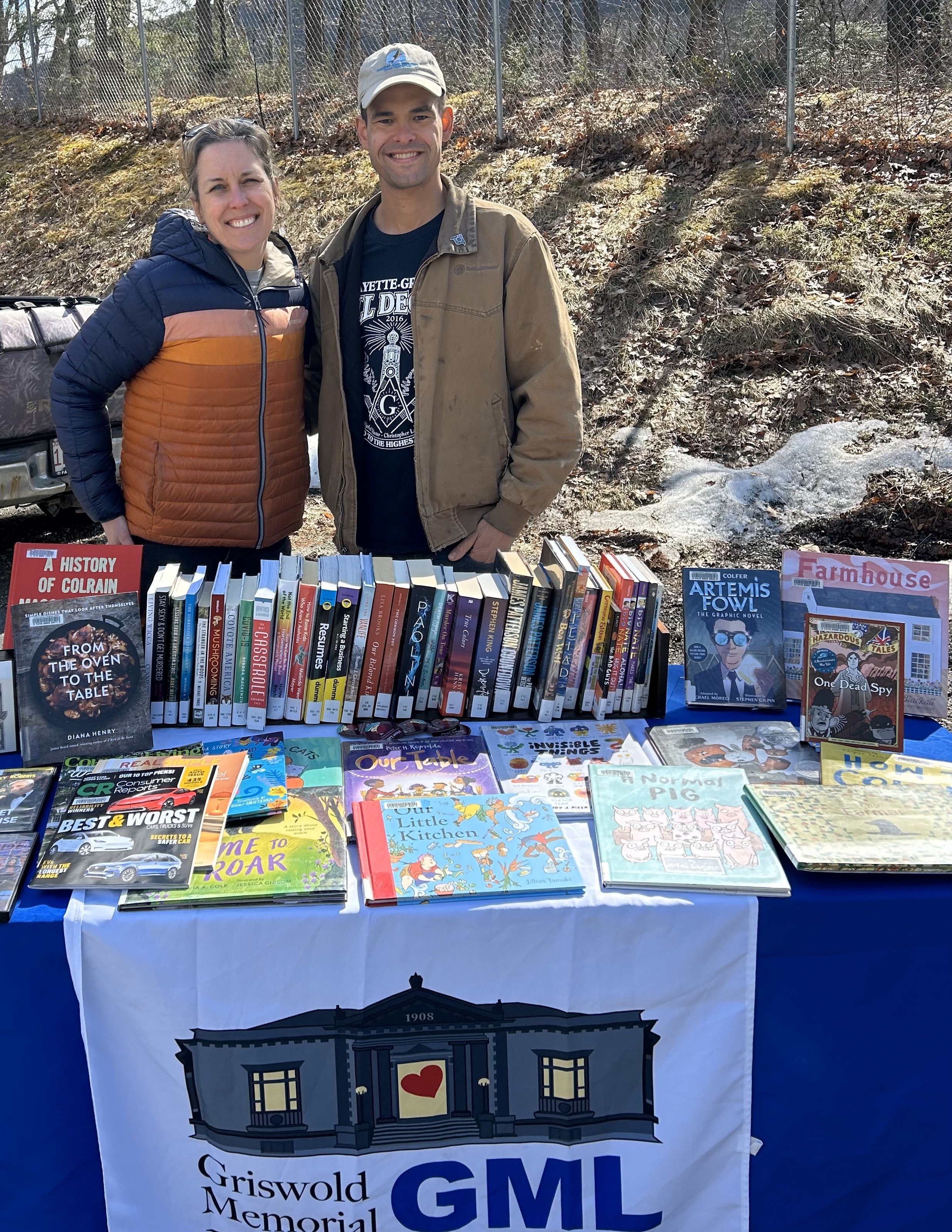Does this count? The politics of library outreach, from past to the very weird present
When I first looked into providing library services at the local county jail, I was unable to find many good examples, especially of small, rural public libraries that were providing any such services. Thankfully, a lot has changed and pretty rapidly, thanks to the Expanding Information Access for Incarcerated People Initiative, funded by the Mellon Foundation and the ALA, for mapping these services where they are known to exist, and leadership at the ALA who prioritized revising the ALA Standards for Library Services for Incarcerated and Detained Individuals. LJ has also helped to spotlight library services for people impacted by incarceration over the past few years.
REACHING OUT TO ALL AGES (l.-r.) Colorado’s Read to the Children program in action, Fresh Start@Your Library Program Manager Jondhi Harrell talks to a patron, Long Branch Free Public Library Social Worker David Perez and Director Tonya Garcia with a Fresh Start display. (Photo: LJ)
I hope these initiatives and more, such as the PRISM project from the Colorado State Library, funded by a grant from the IMLS, will help to normalize and improve systems to support people impacted by the prison industrial complex (PIC) with access to information and resources to survive, persist, and find restorative justice and healing. Meanwhile, librarianship seems to be having an identity crisis whereby limited imagination and scarcity mindset prevent the free flow of information between public libraries and people who are incarcerated.
I’ve written a few papers about libraries and bureaucracy, and the connections between Melville Dewey and Frederic Taylor, and unpacked how accountability, predictability, calculability, “control through non-human technologies,” “financialization,” and the “threat of force” play out in our field, and I encourage everyone to look into this history and theory for themselves. You will find examples everywhere, but they are especially obvious where it comes to libraries and the PIC. One person who responded to a recent survey about library services for people who are incarcerated described this knot of red tape as “a collection of obstacles.” A number of people talked about the lack of support they received from within their own organizations. While my library did not have much administration to contend with in our own organization or at the jail in order to gain approval, we encountered the viewpoint that services for incarcerated people are outside of the library’s mandate when it came to our annual statistics this past year.
As it turns out, there is some question as to what counts as outreach, which the IMLS defines as “any planned event which introduces the group attending to library services or which provides information to participants.” The guidelines go on to discount “offsite outreach efforts that do not otherwise meet the definition of a program session. For example, do not include having a library card signup booth at the farmer’s market.” I’m not out to knock the state data coordinator, this definition does leave some room for interpretation. Lucky for me, I had attended a fabulous session at the Massachusetts Library Association Annual Conference, in which Maty Cropley and Jess Snow of the Boston Public Library shared the following:
The American Library Association (ALA) Office for Diversity, Literacy, and Outreach Services (ODLOS) defines outreach as “providing library services and programs outside the walls of the library to underserved and underrepresented populations; populations such as new and non- readers, LGBTQIA people, people of color, poor and homeless people, and people who are incarcerated.”
This definition validates and affirms outreach services to people who are incarcerated. It feels like a backbone, much in the way that the ODLOS, ALA, and IMLS all protect and support libraries. It is a form of “good bureaucracy,” like the Memorandum of Understanding (MOU) that our libraries have with the Sheriff’s office to guarantee and safeguard our services to the jail. It says “yes” and “this counts,” versus the gatekeeping and denial that is stereotypical of our professions.
Look for the ODLOS definition of outreach today, though, and you won’t be able to find it! I had to email Maty to ask, and have yet to follow up with ODLOS to inquire; hence, I wanted to share it here, for anyone else who may benefit. Meanwhile, I have come by some other interesting resources that speak further to the confusion surrounding libraries and the definition of outreach. In this blog post, “Defining Outreach,” Rick Medrano writes:
We often treat Outreach the way that art, music, and libraries are treated in public schools . . . we do them with leftover funds and leftover resources. This does not provide stability, and it lends itself to a certain disassociation with the rest of the profession. The lack of resources often presents itself in understaffing which creates a whole new set of issues including the lack of historical data for Outreach services in libraries.
Hence, it’s not just library services to people who are incarcerated–we’re not clear on the whole as to the importance of outreach in our profession! I find this reassuring and distressing in equal measures. At least we aren’t consciously othering people impacted by incarceration, but we’re not actively building relationships with people who don’t use library services, either? This won’t do, especially as libraries face existential threats such as Project 2025 and other political attacks, and the Washington Post reported this week about the politics of public library users versus non-users.
The Griswold Memorial Library provides services and meets with patrons at the local transfer station about a half-dozen times per year. We host a free raffle in exchange for people hearing whatever talking point we’ve chosen to highlight, such as, “It’s time to sign up for Summer Reading Club!”
Outreach services are about starting and building relationships. I want to connect with people out in the community or in the jail and show them what we’re about, and that we can save them time and money, for starters. The next thing they know, they’ll find themselves feeling more connected to their community and maybe their own social networks. Outreach is active; much like the move towards roving reference, it entails our asking people how we can help. Sometimes it is just showing up, reliably, to see people and be seen.


